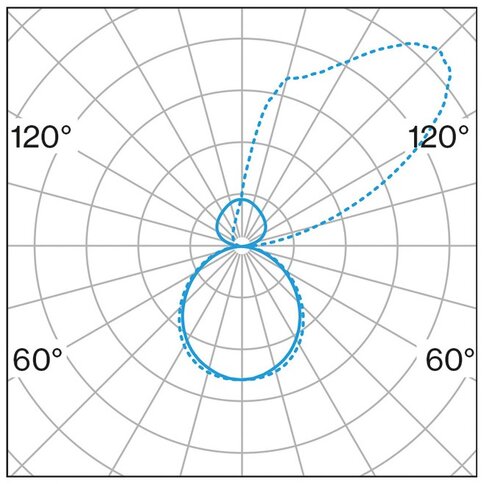Light intensity distribution curve
The luminous intensity distribution curve is a graphic representation of the luminous intensity measurement of a luminaire. Here, it is assumed that the luminaire is suspended centrally in a standard room and can radiate its luminous flux freely in all directions. The luminous intensity of the luminaire is determined by means of a goniophotometer. The distance of the contour of the luminous intensity distribution curve from the centre of the luminaire gives information about the luminous intensity in the respective direction. This three-dimensional contour is cut through in two vertical planes for a simple two-dimensional representation. The solid line shows the luminous intensity distribution curve in the direction transverse to the luminaire, the dashed line represents the luminous intensity distribution curve in the longitudinal direction of the luminaire. The cutting plane in the transverse direction is indicated by (C0-C180), the cutting plane in the longitudinal direction by (C90-C270). The number after the “C” indicates the angle at which the plane lies when looking at the light distribution curve from above.
The C-plane system is described in EN 13032-1: 2004.
Using the luminous intensity distribution curve, the lighting designer can assess the suitability of the luminaire for the intended purpose.
For luminaires with a highly asymmetric light distribution, it may be necessary to lay more suitable cutting planes through the luminous intensity distribution body. For example, a plane rotated through 45° is indicated by C45-C225.
Example of the light distribution curve of a direct/indirect luminaire with asymmetrical indirect component.

